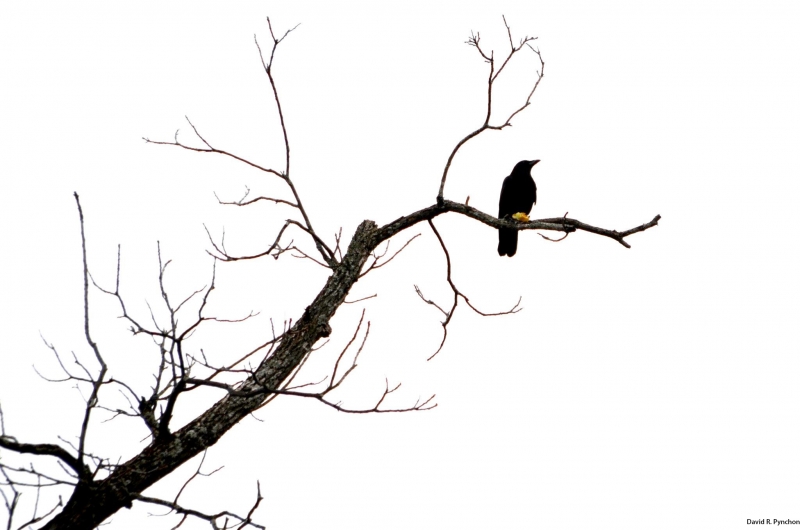
A War on Crows
At this time of year crows flock to US cities by the thousands to roost in urban trees. The North Country is no exception, as illustrated in recent news stories about Watertown’s efforts to scare off more than 30,000 crows from city landmarks. In previous years, Watertown has hired private contractors to chase crows from their roosts using remote-controlled aircraft, distress calls, pyrotechnics, and hand-held lasers, according to the AP. In other words, Watertown has waged a drone war against crows.
As winter approaches, crows are flocking back to the city, and many are choosing to roost around the Jefferson County Historical Society Museum. By all accounts, they have been making a mess, and maintenance workers are spending more time cleaning crow droppings off sidewalks and buildings. Others have expressed legitimate concerns about health hazards associated with bird droppings. So this year, the Watertown city council has decided to take things up a notch: on Monday night, by a 3-2 vote, city officials authorized contractor Loomacres Wildlife Management to begin killing crows with pellet guns.

As Watertown wages an all-out war on crows, I thought it would be interesting to examine our relationship with them. Most of us see crows frequently, and if we think of them at all, we think of them as pests. They’re noisy, and it’s not uncommon to see them picking through our trash. Crows will eat almost anything, but because they scavenge dead animals we often associate them with death. As a result, groups of crows are called “murders” in many folk tales. These perceptions have led to some totally ridiculous cultural associations, on display in this scene from Alfred Hitchcock’s 1963 film The Birds. Crows are also commonly seen around cemeteries, but this may be entirely coincidental: cemeteries are often home to the biggest, oldest roosting trees.
Crows have a bad reputation, but they also provide valuable services to humans. They are particularly susceptible to West Nile Virus, and high crow mortality provides us with an early warning that the disease is present. Further, they clean the environment of unwanted litter and wastes. Crow sympathizers contend that humans live in a mutually beneficial relationship with them. No doubt, hungry crows have saved roadkill collection teams a lot of work over the years. Crows make a mess, but they also help clean up messes humans have made.
The Watertown case sparked my curiosity about why crows would choose to aggregate in a noisy, bright, polluted city center in the first place. It turns out there are several reasons. One is that urban areas tend to be a few degrees warmer than the surrounding countryside. Humans are not the only North Country residents that will take whatever thermal advantage they can get during the winter.
A second reason crows roost in cities is lack of predators. Naturalist writer Bernd Heinrich has said “[Great horned] owls are perceived by crows to be their greatest enemies, and if they find one, the alarm goes out to the roost and dozens of crows converge quickly to harass the owl relentlessly...[i]” Owls are less likely to be found in cities. Further, crows do not see well at night, and city lights allow them to view approaching predators. For crows roosting in town, city lights act as nightlights.
When we think about Watertown's crow control issue, we should compare the cost of removing crows to that of cleaning up after them. But we should also consider this: humans and crows have a complex relationship, but we both seek food, warmth and security. Is it right to unleash the tools of modern warfare on our wild neighbors?
I welcome your comments below.


Really interesting post!